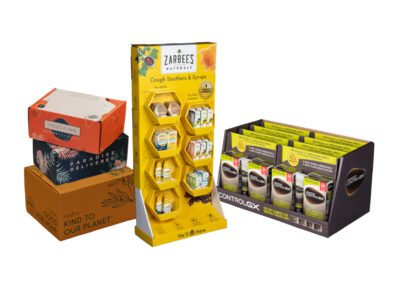
As businesses work toward a circular economy to protect the planet, the U.S. continues to introduce new laws and mandates to reduce plastic use, promote recycling, and advance sustainable practices. One such initiative, Extended Producer Responsibility (EPR), is a policy that holds producers responsible for their products throughout their entire life cycle, including disposal, recycling, or reuse at the end of their life. The concept, introduced in Sweden in 1990, has expanded worldwide over the last 35 years, with Maine being the first U.S. state to introduce legislation in 2004. These mandates have prompted consumer goods companies to rethink their packaging strategies, focusing on sustainability and more efficient product life cycles.
As companies face pressure to meet these new guidelines, sustainable packaging solutions like corrugated have become fundamental. Corrugated packaging, sustainable by nature, can play a key role in contributing to these sustainability goals and subsequently helping companies meet the latest regulatory guidelines. Its versatility, cost-effectiveness, and customization potential make it ideal for everything from a simple brown box to a well-branded retail display.
For corrugated producers like PCA, which offers a wide variety of point-of-purchase display solutions, it’s a prime opportunity to reimagine what corrugated can do. With state-of-the-art design equipment and testing labs, PCA can develop solutions designed to maximize structural integrity, while minimizing material usage, contributing to sustainability.
Recently, one of PCA’s customers, a high-profile beauty brand, tasked PCA with helping them redesign their corrugated retail displays to eliminate plastics and simplify the recycling process for their displays. To meet this challenge, PCA implemented two key solutions:
Case 1: Reimagining Corrugated to Reduce Plastics
For the first retail display, products hung from plastic hooks. Typically, plastic components like hooks or fasteners need to be separated from the corrugated material before the entire display can be recycled, which adds significant labor and time to the recycling process for the retailer. To address this issue, PCA’s design team developed an innovative corrugated hanging mechanism that provided the same strength, durability, and functionality as plastic but was entirely made of recyclable corrugated material. This solution eliminated the need for separation during recycling, ensuring that the entire display could be recycled as one homogeneous unit, making it simpler and more cost-effective for both retailers and recycling facilities.
Case 2: Simplifying Recycling with Corrugated Designs
For another display, the same beauty brand requested a redesign of an existing display so it could be easily disassembled and recycled. PCA worked with the brand to redesign the display, eliminating unnecessary materials and non-recyclable components. This simplified the assembly process, reduced waste, and made the display easier to disassemble and recycle. Additionally, the new design optimized shipping efficiency by reducing the pack-out size, cutting shipping volume by 25%, which lowered shipping costs and minimized material usage.
Through small, yet innovative design choices, PCA helped the retailer improve their sustainability efforts while optimizing production and shipping efficiencies. If you’d like more information about how PCA can help you design your perfect retail display, please fill out the form below.


